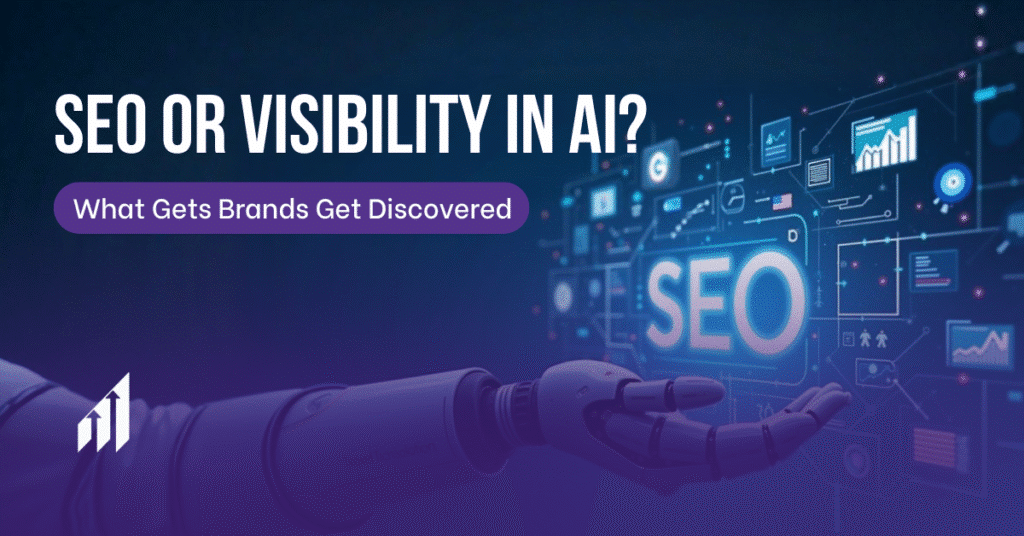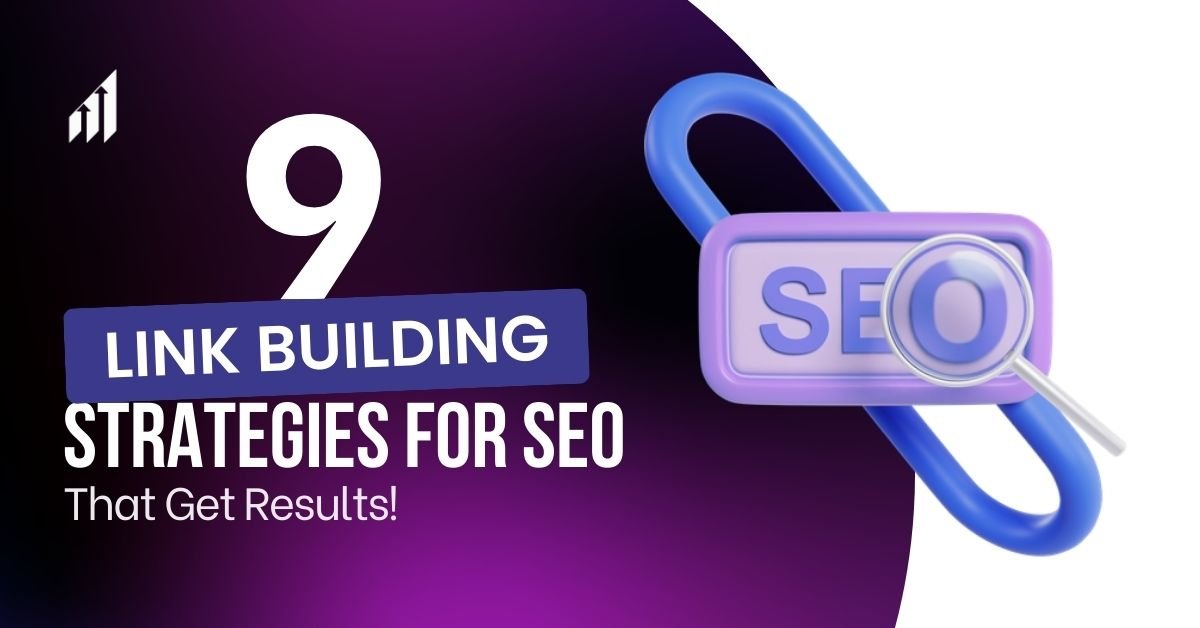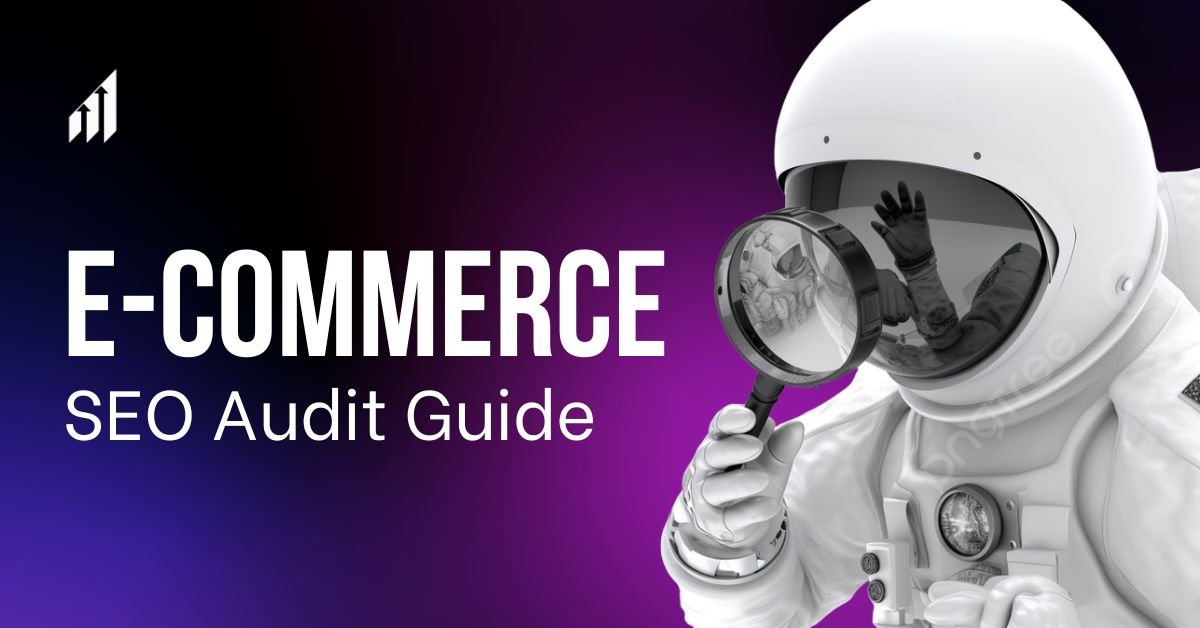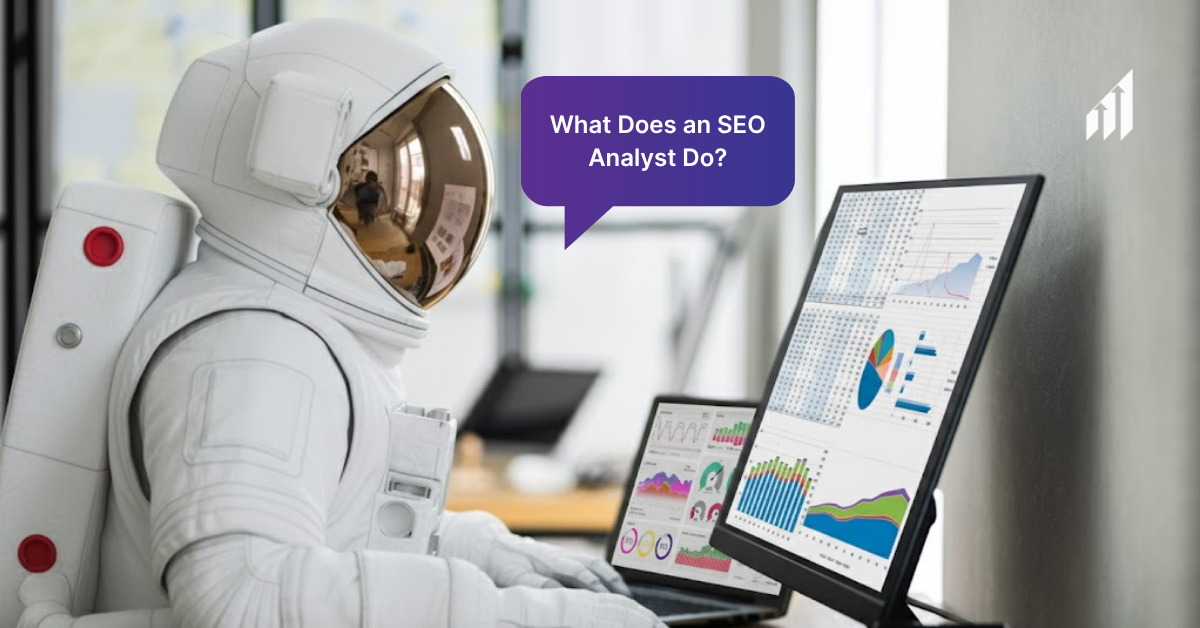Highlight:
- From search rankings to AI mentions
- Reddit and Wikipedia lead AI sources
- Teamwork across departments improves AI reach
- Structured data helps AI find content
- Expertise and trust build brand credibility
The friendly neighborhood AIs have been making life a combination of easy and difficult, right? Who would want to go looking through search result when they can go to ChatGPT, type in their questions and receive direct answers. These tools scan the entire web, get information from multiple sources, and deliver responses without having to tap any link at all. Visibility in AI is what matters now.
The smart ones in the industry now know that website optimization alone is insufficient. They coordinate efforts across departments to consistently attract multiple platforms where these intelligent systems source their information.
The New Reality Of Going From Search Rankings to AI Citations
The basic goal of online marketing now also includes from achieving high search rankings to securing citations in intelligent responses.
Visibility in AI platforms now determines whether potential customers discover your brand at all. Since 400 million people now use ChatGPT weekly, it’s a massive audience that businesses can no longer afford to ignore.
Measurable Impact on Traditional Search Traffic
The impact on traditional search traffic is already measurable. Non-branded keywords triggering Google’s AI Overviews experience an average 19.98% decline in organic click-through rates. Does this not scream users increasingly accept AI-generated responses as complete answers rather than starting points for further research.
However, some businesses are experiencing unexpected benefits from this transition. For example, users who do click through from AI responses demonstrate stronger purchase intent than those browsing traditional search results.
This Is Where AI Tools Source Information From
AI systems draw information from specific types of platforms that consistently provide reliable, well-structured content. The most influential sources have established themselves through user trust, content quality, and accessibility to AI crawlers.
-
Reddit’s
Reddit dominates visibility in AI platforms due to its combination of user-generated discussions and strategic partnerships. Google and OpenAI have established licensing agreements with Reddit, giving their AI systems preferential access to the platform’s conversations.
The platform’s structure makes it particularly valuable for AI systems seeking diverse perspectives on topics. Product recommendations, troubleshooting advice, and industry discussions on Reddit often reflect real user experiences rather than marketing content. Businesses benefit by participating genuinely in relevant conversations rather than promoting their products directly.
-
Wikipedia
Wikipedia maintains its position for the best visibility in AI due to its rigorous editorial standards and comprehensive coverage of topics. The platform’s citation requirements and collaborative editing process create content that AI systems consider highly authoritative. Companies can influence their Wikipedia presence by ensuring accurate information exists about their industry, leadership, and significant contributions to their field.
-
Professional and Review Platforms
YouTube’s role extends beyond traditional video search into AI citations. The platform’s transcription capabilities and metadata structure allow AI systems to extract specific information from video content and reference it in text responses. Educational content, product demonstrations, and expert interviews on YouTube increasingly appear as sources in AI-generated answers.
Professional networks like LinkedIn contribute to visibility in AI platforms through thought leadership content and industry expertise. Posts from verified professionals, especially those with established follower bases and engagement rates, frequently appear in AI responses to business-related queries. The platform’s professional context gives additional weight to insights shared by industry experts.
Building Cross-Department Partnerships for Visibility In AI
-
The SEO Department
Traditional SEO teams focused primarily on optimizing owned websites, but best search engine optimization strategies for visibility in AI require coordinated efforts across multiple departments. Answer Engine Optimization (AEO) demands a cross-channel perspective that extends from website content to brand reputation, social presence, and every platform where AI systems source information.
SEO professionals must evolve from technical executors to internal consultants who shape strategy across the organization. This transformation involves advising on discoverability across platforms the company doesn’t control and participating in campaigns before they launch rather than optimizing content after publication.
-
Content Team Collaborations
Content teams represent the most direct partnership opportunity for maximizing visibility in AI. Research shows that AI systems prioritize original perspectives, first-party data, and clear authorship when selecting sources for responses. Content creators should focus on producing material that AI models can easily interpret and cite.
The most effective content partnerships focus on:
- Creating platform-native content that performs well on Reddit, Quora, and industry forums
- Developing FAQ sections and topic summaries that directly answer common user questions
- Structuring content with clear headings and metadata that AI systems can parse efficiently
- Repurposing blog content into formats suitable for different platforms where AI tools source information
Content that travels across channels performs better in AI citations than content confined to company websites. Guest posting, expert roundups, and collaborative articles increase the likelihood of appearing in multiple authoritative sources that AI systems reference.
-
Product Marketing
Product marketing teams play a crucial role in how AI systems discover and reference products in commercial responses. Best SEO strategies for AI include providing search insights during product naming and positioning decisions, ensuring that new products use terminology that aligns with how customers actually search for solutions.
High-intent terms for visibility in AI should be incorporated into category listings and comparison sites where these artificial intelligence systems look for product information. Companies with optimized profiles on G2, Capterra, and industry-specific marketplaces significantly increase their chances of appearing in AI-powered product recommendations.
-
Engineering and Technical Implementation
Technical teams ensure that websites remain accessible to AI crawlers and search engines alike. While traditional SEO required basic crawlability, AI optimization demands additional technical considerations including structured data implementation, fast loading speeds, and clear content hierarchy.
Some companies are implementing LLMs.txt files and IndexNow protocols to improve how AI systems discover and process their content. These technical optimizations help AI platforms understand content context and authority signals more effectively.
-
Cross-Department Success Metrics
Measuring collaborative success requires tracking metrics beyond traditional website performance. Companies implementing best SEO strategies for visibility in AI monitor citation frequency across different platforms, referral traffic from AI systems, and brand mention patterns in AI responses.
The most effective measurement approaches combine manual tracking of AI citations with automated monitoring of brand mentions across platforms where AI systems source information. This comprehensive view helps teams understand which collaborative efforts produce the strongest results in AI visibility.
The Challenge of Measuring AI Visibility
Unlike traditional SEO, which benefits from established analytics platforms like Google Search Console, Ahrefs, and Semrush, visibility in AI optimization tools remain limited and specialized. Most existing SEO platforms focus on tracking AI Overviews but provide minimal insights into performance across other AI engines like ChatGPT, Perplexity, or Claude.
Current tracking limitations include:
- Google Search Console combines AI Overview data with traditional search results without filtering options
- Ahrefs and Semrush track AI Overview performance but focus on keywords rather than conversational questions
- Manual citation tracking across multiple AI platforms requires significant time and resources
- Attribution challenges make it difficult to connect AI mentions to business outcomes
Available Monitoring Solutions
For businesses with limited budgets, manual tracking remains a viable alternative to measure their visibility in AI. Companies create spreadsheets documenting targeted questions, search dates, and citation results across different platforms. While time-intensive, this approach provides direct insights into which content and platforms generate the most AI references.
Some organizations implement custom analytics setups within Google Analytics 4, creating channel groups that separate AI referral traffic from traditional sources. This requires regex configuration to identify traffic from AI platforms, though the setup requires updating as new platforms emerge.
Optimize To Be On Top Of The Results
-
Technical Optimization Strategies
AI visibility optimization tools beyond monitoring to include technical implementations that improve content accessibility for AI systems. Structured data markup helps AI platforms understand content context, authorship, and relationships between different pieces of information.
Modern technical optimization includes:
- Implementation of schema markup for articles, products, and organizational information
- LLMs.txt file creation to guide AI crawlers toward important content sections
- IndexNow protocol adoption for faster content discovery by AI systems
- Clear content hierarchy with descriptive headings and metadata
Website speed and crawlability remain fundamental requirements. AI systems, like search engines, prioritize accessible content that loads quickly and provides clear navigation paths. Companies with technical issues affecting traditional SEO performance typically struggle with AI visibility as well.
-
Content Optimization
The most effective content strategies focus on creating authoritative, well-sourced material that provides unique value within specific subject areas. Generic advice and commonly available information rarely appear in AI citations, while original insights, first-party data, and expert perspectives generate consistent references.
Content creators should structure information with clear topic divisions, use active voice, and provide specific examples rather than abstract concepts. AI systems favor content that directly answers questions without requiring additional interpretation or context.
-
E-E-A-T Signals for AI Systems
Experience, Expertise, Authorship, and Trustworthiness (E-E-A-T) signals that influence traditional search rankings also impact visibility in AI citation decisions. AI systems evaluate content credibility through author credentials, publication authority, citation quality, and consistency across sources.
Companies can strengthen their E-E-A-T signals by:
- Publishing content under verified expert profiles with clear credentials
- Maintaining consistent brand information across platforms where AI systems source data
- Earning citations from other authoritative sources within their industry
- Demonstrating expertise through original research, case studies, and unique insights
The Wrap Up
Long-term success with visibility in AI requires establishing sustainable monitoring and optimization processes. Companies should designate team members responsible for tracking AI citations, analyzing competitor visibility, and identifying new optimization opportunities as AI platforms evolve.
The most effective monitoring systems combine automated tracking, where available, with manual verification of important citations. This approach ensures accuracy while maintaining awareness of how brand messaging appears in AI responses across different platforms and query types.
Get ahead of the game with the help of our guides at DigiEvolve. With the rapid pace of AI adoption, waiting could mean losing valuable market share to competitors who act now.




